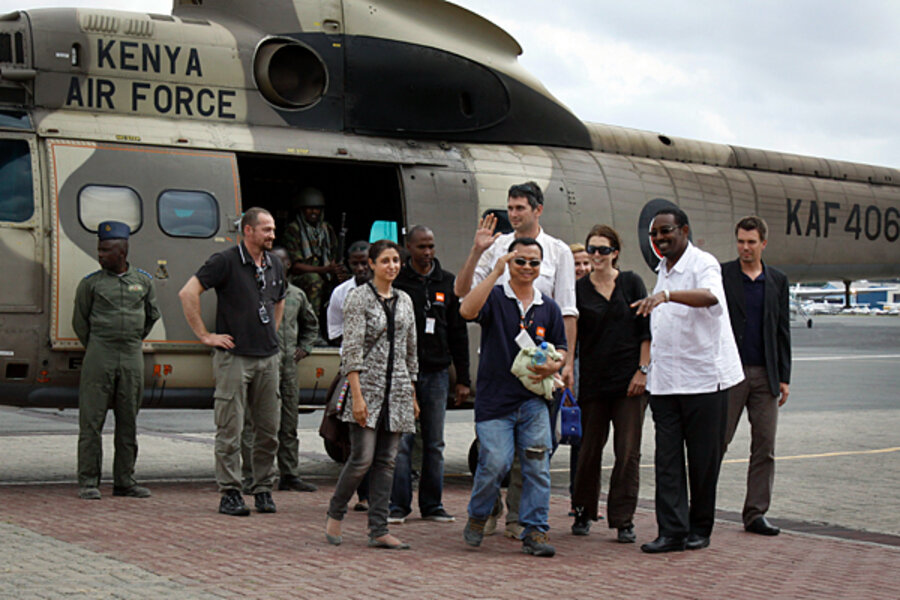Somali rescue operation frees 4 kidnapped foreign aid workers
Loading...
| Mogadishu, Somalia
Somali government troops, together with Kenyan Defense Force soldiers, rescued four foreign aid workers who had been kidnapped from an aid convoy near the world’s largest refugee complex at Dadaab, Kenya.
The rescue occurred on Monday morning, following a tip from local Somalis, Somali officials told the Monitor.
Government forces killed two of the kidnappers during a shootout, and captured three other kidnappers during the operation. All of the kidnapped aid workers – a Norwegian, a Pakistani, a Filipino, and a Canadian – were safe after the rescue, although the Pakistani aid worker was receiving treatment at a Kenyan military base for a gunshot would he had received during last week’s kidnapping. The injured aid worker has been described to be in stable condition.
Adan Hirsi, a military commander with the Somali Transitional Federal Government (TFG) in Dobley town confirmed that the forces seized the aid workers after fighting in a residence near Afmadow town. Somali and Kenyan forces captured Afmadow from the Islamist Al Shabab militia on May 31, bringing a final assault on Shabab’s headquarters in the southern Somali port city of Kismayu one crucial step closer.
“We were on security operations around Afmadow town, as we received secret information about them [the kidnappers],” Mr. Hirsi told the Monitor by telephone. “Some of our forces have seen the kidnappers with a car sitting in small forest place beside a short path, and even seen the foreigners but the gunmen fired on the forces, and after fighting they recued the aid workers.”
The Norwegian Refguee Council, where all four aid workers worked, posted a statement on its website:
"The Norwegian Refugee Council is relieved and pleased to confirm that our four abducted colleagues are found and released."
A Kenyan driver was killed during the initial June 29 kidnapping attack near Dadaab.
It is still unknown whether the gunmen belonged to a political militant group such as Al Shabab, or were simple criminals engaged in kidnapping for ransom.
Hirsi vowed that the Somali transitional government troops in the southern regions of Somalia, known as Jubba would continue to mount rescue operations against Al Shabab and other kidnappers and to venture into Al Shabab areas to rescue kidnapped foreigners and local aid workers.
In October two Spanish aid workers from the group Doctors Without Borders were kidnapped from Dadaab camp and are still in the hand of unknown men in Somalia.
“I am not sure but I think Al Shabab is keeping kidnapped foreigners in Kismayu and Merka,” Hirsi said. “What I can confirm to you is that we will continue our efforts to save any human being in the hand of the Islamist group linked to Al Qaeda, this is a good step taken forward.”
The freed aid workers were handed over to Kenyan authorities in the district near the Kenya border, and may have been flown back to Nairobi.
While Shabab has steadily lost territory to Somali government troops, and the Ugandan, Burundian, and Kenyan troops involved in an African Union peacekeeping mission based in Somalia, the Islamist militant group still controls large swaths of territory in southern Somalia. Even so, the NRC rescue has been portrayed as a big victory for government troops, which had only been able to control a few city blocks of Mogadishu just a few months ago.





